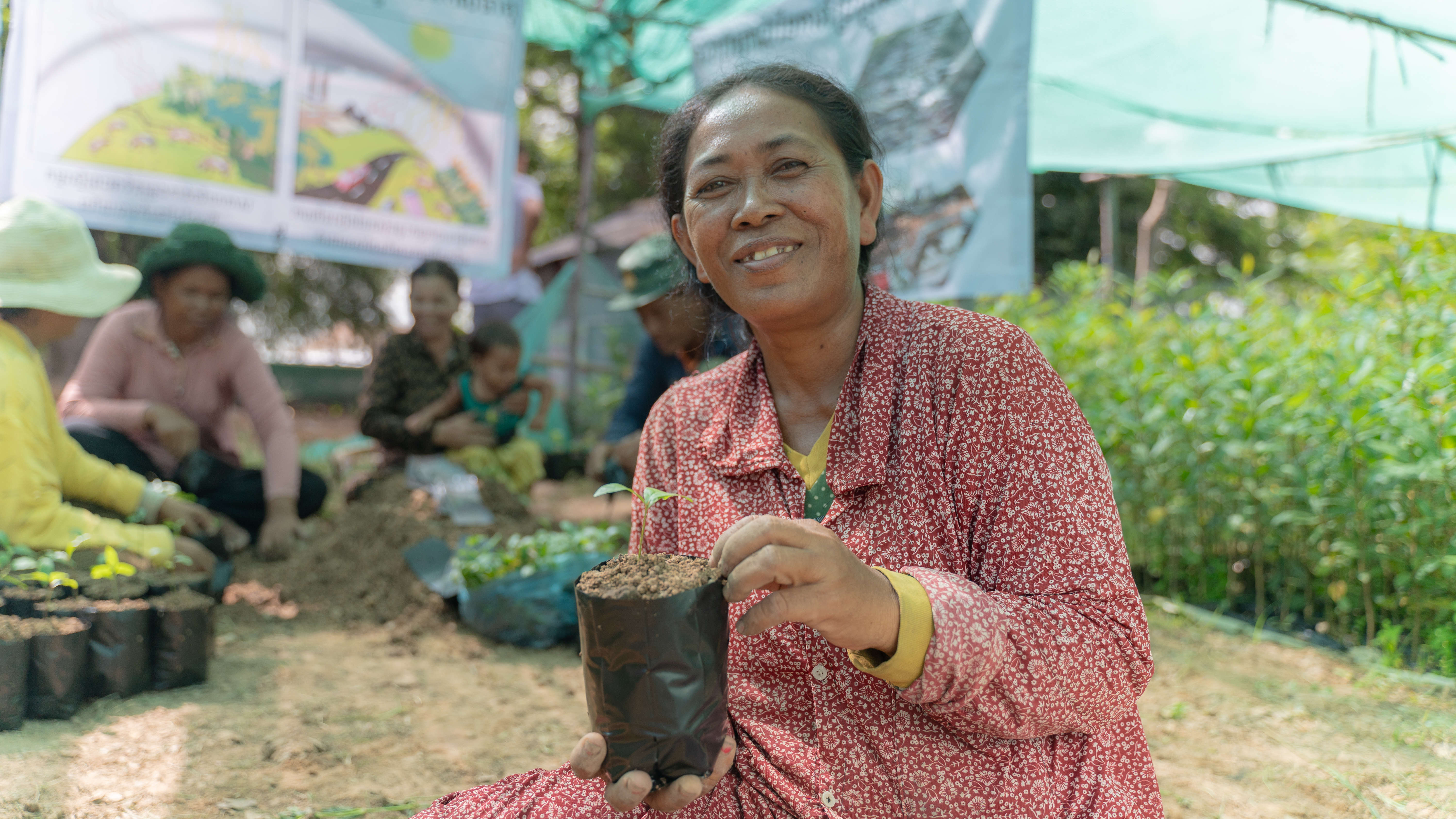
Authored by: Cambodia UNDP Country Office & UNDP’s Climate and Forests Team
As Cambodia sets ambitious milestones to become an upper middle-income country by 2030 and a high-income country by 2050 and prepares for graduation from the Least Developed Country status, the Royal Government of Cambodia recognizes the necessity of sustainably managing its natural resources to achieve its Vision 2050.
Cambodia's Circular Strategy on Environment
In 2023, the Ministry of Environment launched the five-year Circular Strategy on Environment (CSE) 2023-2028, prioritizing environmental and natural resource actions. This strategy aims to support the country in achieving its Vision 2050, as well as national environmental goals of the Pentagonal Strategy Phase 1 (2024-2028), the Nationally Determined Contribution (NDC) and Long-Term Strategy for Carbon Neutrality, which aspire to achieve national carbon neutrality by 2050.
Clean", "Green", and "Sustainable" are the three sub-strategies of the CSE. The "Green" goal includes expanding forest cover to 60% by 2050 through reforestation and restoration, promoting tree plantations in Community Protected Areas, enhancing biodiversity conservation, and strengthening the conservation and management of protected areas.
Supporting CSE’s Green Goal
Since 2023, through its flagship Climate Promise initiative, and support from the UN-REDD Programme, UNDP has aligned its support with CSE’s goal, with a focus on securing new sources of green financing through environmental and climate initiatives and innovative financial instruments, leveraging the progress of the REDD+ National Programme as one of the key vehicles:
Key efforts include:
- Working with the Ministry of Environment's REDD+ Secretariat to develop a work plan to mobilize climate finance from carbon markets under the Forestry and Land Use sector (FOLU). This plan is based on Cambodia’s Operational Manual for Article 6 and complements efforts to strengthen the institutional architecture for managing REDD+ revenues and financial incentives.
- Streamlining REDD+ information management through the national Nesting initiative to support the integration of data from a REDD+ Database into a centralized National Registry to enhance decision-making and transparency.
- Collaborating closely with indigenous organizations and communities to developing innovative forest management models that leverage their unique knowledge and respect their customs and culture empowers these key stakeholders in climate dialogues, such as the upcoming NDC communication cycle to the UNFCCC due by 2025, and strengthens their capacities for improved forest management and protection.
Challenges and the way forward
Despite the commendable progress made by Cambodia through the REDD+ Programme and other initiatives over the last decade, several challenges could hinder progress toward achieving CSE's Green Goal. These challenges include weak laws and lack of enforcement, insufficient resources, illegal use of natural resources, limited sustainable and alternative livelihood opportunities for communities dependent on forest and other natural resources, and inadequate sustainable forest management programmes. Additionally, the technical capacity to restore land and increase forest cover remains limited, posing a critical obstacle to optimal progress.
Moving forward, integrated support is essential to ensure the effectiveness of REDD+’s programme in achieving the NDC’s forest targets in alignment with national forest priorities and the needs on the ground.
Despite the challenges, Cambodia's unwavering dedication to the CSE, coupled with partnerships like those with UNDP’s Climate Promise and the UN-REDD Programme provides a solid foundation for a green future in the coming years.
